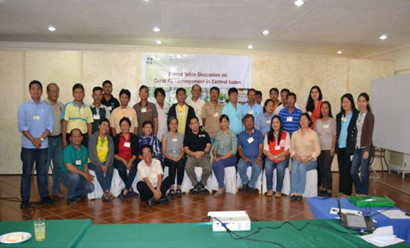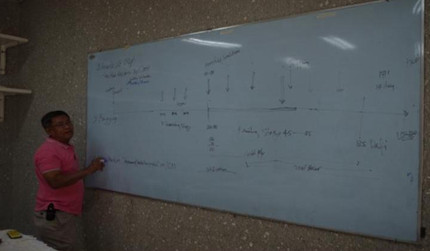 Mango growers in Bulacan and other neighboring provinces in Central Luzon recently reported high infestation of cecid fly.
Mango growers in Bulacan and other neighboring provinces in Central Luzon recently reported high infestation of cecid fly.
Locally known as “kurikong”, the insect pest has caused about 70−100% loss in yield, leaving the farmers with almost no income.
The kurikong onslaught has alerted the Department of Science and Technology-Philippine Council for Agriculture, Aquatic and Natural Resources Research and Development (DOST-PCAARRD) to monitor and survey the infested areas.
The mango experts who did the survey observed that most mango growers do not practice the recommended package of technologies (POT) in mango production.
Kurikong is an insect that resembles a mosquito. It commonly lays its eggs on the fruit surface and young mango leaves. As the larva bores into the fruit and feeds on it, the larva causes circular spots or holes on the fruit. When attacked at an early stage of fruit development, the fruit falls off from the tree and rot. Infested mature fruit, on the other hand, develops randomly distributed circular brown scab-like spots on its surface. Infestation of kurikong highly affects the quantity, quality, and therefore, the market price of the produce.
 Kurikong infestation was first recorded in 1987 and has spread nationwide in 2010. Measures to prevent and control the infestation have been promoted since then.
Kurikong infestation was first recorded in 1987 and has spread nationwide in 2010. Measures to prevent and control the infestation have been promoted since then.
Now that infestation recurs in Central Luzon and neighboring mango growing regions, experts advise farmers to continuously practice the POT for mango especially the integrated pest management (IPM). Experts advise mango growers to prune crowded mango tree branches after every harvest, to bag the fruits 45−55 days after flower induction, and to practice proper sanitation in the orchard, among many other practices.
Dr. Oscar S. Opina, a mango expert and Science and Technology (S&T) consultant, stressed the importance of bagging young fruits. As many growers in Central Luzon do not practice bagging and other cultural management strategies, their farms become most vulnerable to infestation.
Likewise, Dr. Celia dR. Medina, a cecid fly expert and professor from the University of the Philippines Los Baños, encouraged farmers to follow insecticide management through wise use of chemical insecticides such as pyrethroid, cartap, organophosphate, neonicotinoid, and carbamate.
 In a recent round table discussion organized by PCAARRD, mango experts, researchers, growers, and government officials and representatives created an action plan to manage the kurikong infestation.
In a recent round table discussion organized by PCAARRD, mango experts, researchers, growers, and government officials and representatives created an action plan to manage the kurikong infestation.
Per action plan, management strategies against kurikong will be incorporated in the POT being implemented in the ongoing PCAARRD-funded project “Assessment of Productivity Enhancement Measures (PEMs) on ‘Carabao’ Mango in Central Luzon.”
The action plan includes production of IEC materials, conduct of trainings and seminars, and showcase of demonstration sites of best-bet practices against kurikong.
